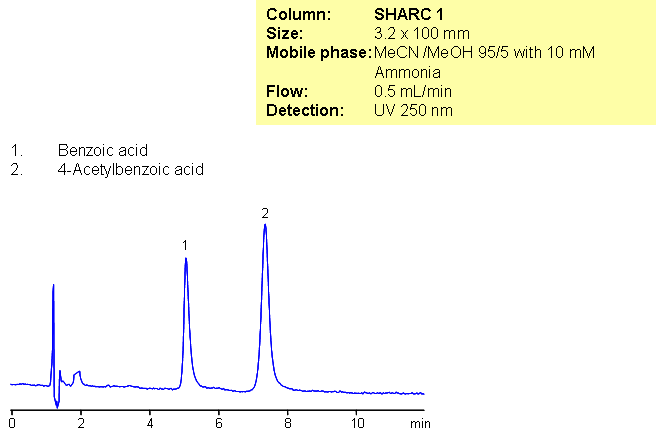
A general approach for analysis of various organic acids with MS detection in negative mode was developed using hydrogen-bonding stationary phase – SHARC 1. A highly sensitive method allows to analyze traces of organic acids in various matrices using ACN/MeOH/ammonia mobile phase. In hydrogen-bonding chromatography acetonitrile is a weaker solvent and alcohol is a stronger solvent. Various gradient and isocratic conditions can be used
| Column | Sharc 1, 3.2×100 mm, 5 µm, 100A |
| Mobile Phase | MeCN/MeOH – 95/5% |
| Buffer | Ammonia 10mM |
| Flow Rate | 005 ml/min |
| Detection | UV, 250 nm |
| Class of Compounds |
Acid, Hydrophilic, Ionizable, Vitamin, Supplements |
| Analyzing Compounds | Benzoic Acid, Acetylbenzoic acid |
Application Column
SHARC 1
The SHARC™ family of innovative columns represents the first commercially available columns primarily utilizing separation based on hydrogen bonding. SHARC stands for Specific Hydrogen-bond Adsorption Resolution Column. Hydrogen bonding involves an interaction or attraction between a bound hydrogen atom and molecules containing electronegative atoms, such as oxygen, nitrogen, and fluorine.
Select optionsBenzoic Acid
UV Detection





